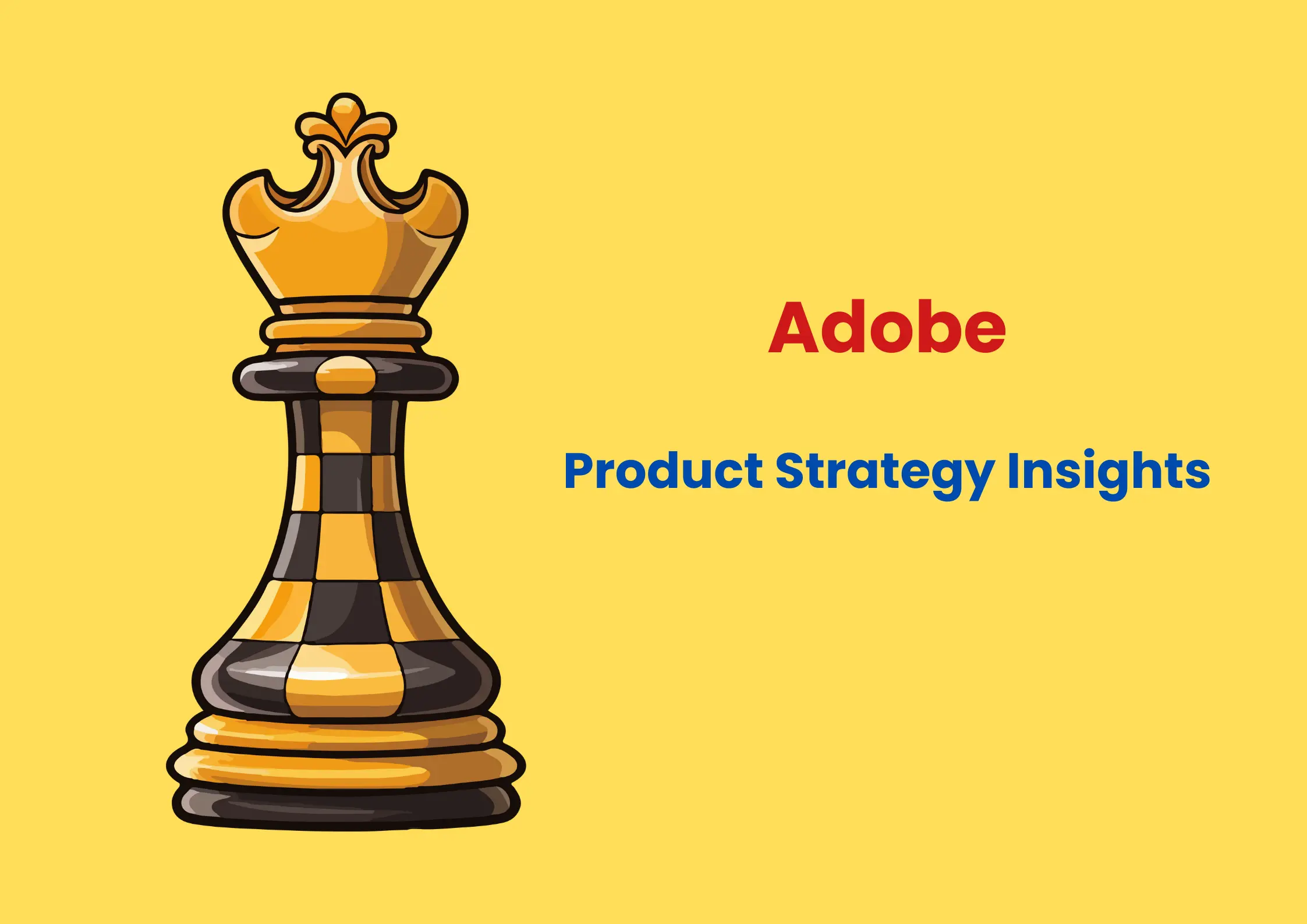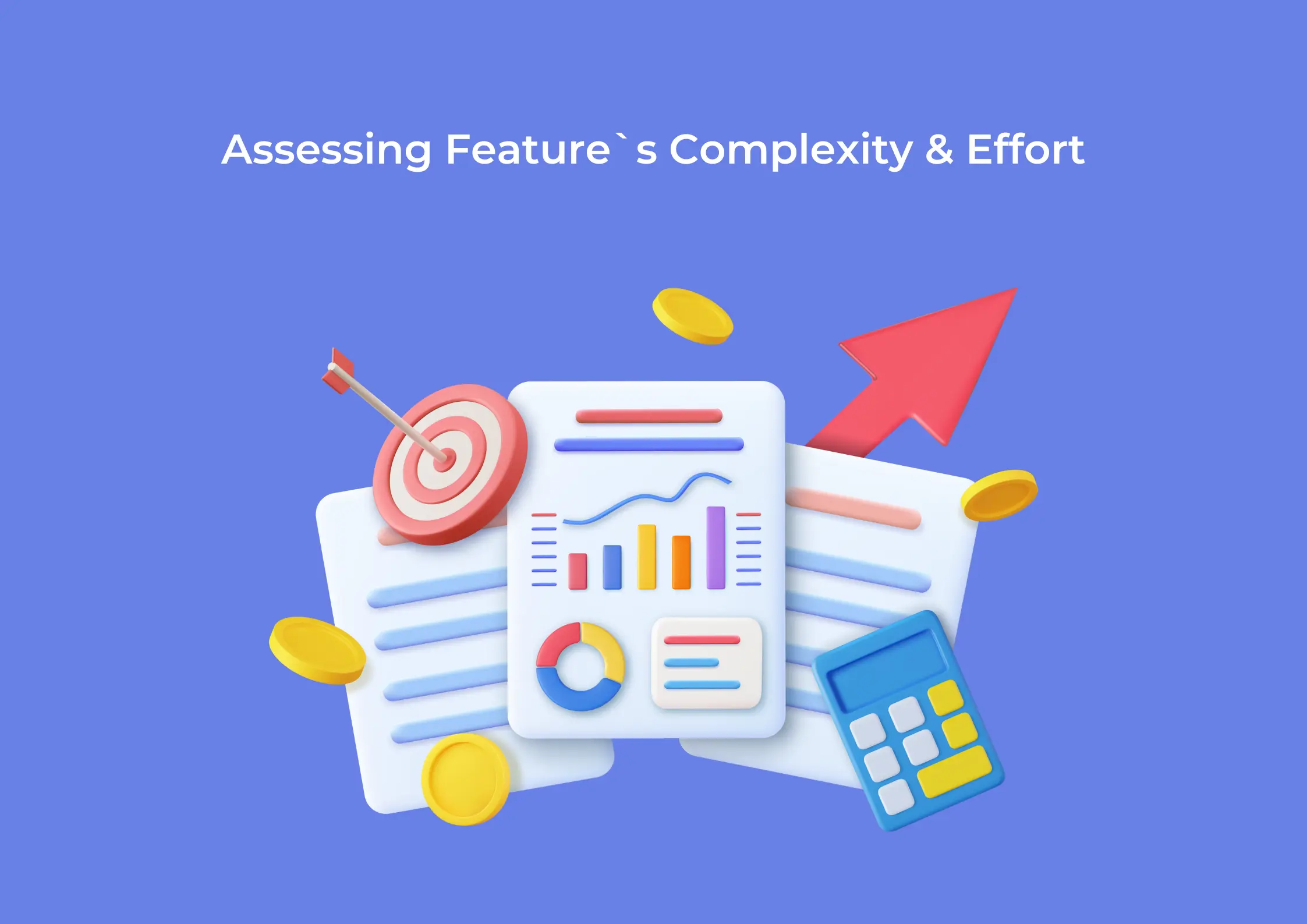📢 Sign up to my newsletter and never miss a beat!
In this article, I will explore what keeps Adobe so successful and competitive over such a long period as a software product company. Adobe stands as a paragon of innovation and strategic acumen, continuously setting benchmarks in the software industry. The company’s meteoric rise and sustained market dominance are not products of chance but the result of a meticulously crafted product strategy that has evolved over decades. We will discuss what are the core pillars of Adobe’s success, offering a glimpse into the strategies that have enabled it to capture and maintain a leading position in the market. From its diverse product portfolio that catouches various user needs and industry segments, to its flexible subscription models that cater to a broad range of customers, Adobe’s approach is both dynamic and customer-centric. Furthermore, strategic acquisitions, partnerships, and a relentless focus on innovation and R&D underscore its capacity to adapt and thrive in the ever-changing technological landscape. Each of these strategic decisions has not only fortified Adobe’s market position but has also driven the company to new heights, creating substantial value for its stakeholders. This article aims to unpack these strategies, providing insights into how Adobe has built and maintained its empire in the competitive world of digital products.
1. Diverse Product Portfolio to capture different segments and maximize their TAM
Adobe’s strategic mastery in diversifying its product suite is a cornerstone of its ability to maximize its Total Addressable Market (TAM). By developing specialized tools tailored to various industry requirements, Adobe ensures comprehensive market coverage—from individual freelancers to large enterprises. Products such as Premiere Rush offer novice video editors user-friendly interfaces on both mobile and desktop platforms, while Adobe Animate caters to web and game developers with advanced animation capabilities.
This tailored approach extends to Adobe’s broader ecosystem, which includes the Creative Cloud for designers and content creators, the Experience Cloud for marketers and business analysts, and the Document Cloud for document management solutions. By spanning multiple clouds, Adobe effectively expands into diverse verticals, delivering sector-specific solutions that enhance user engagement and retention. This strategic positioning not only allows Adobe to infiltrate every corner of digital content creation but also to adapt to the evolving needs of its users across different sectors, thereby fostering long-term loyalty and continuously expanding its market reach.
2. Subscription flexibility to better cater to the individual user needs
Adobe’s subscription model exemplifies its commitment to flexibility, catering to the individual needs of its diverse user base. This model allows users to tailor their access according to their specific requirements and budget constraints. Adobe offers several subscription options, making its suite of products accessible and adaptable for a variety of users, from independent freelancers to large enterprises.
Users can opt for the full Adobe Creative Cloud, which includes access to all Adobe’s creative tools and services, providing a comprehensive suite of software for graphics, video, and web design among other creative tasks. This all-encompassing approach is ideal for professionals and agencies that require a wide array of tools to handle complex, multidisciplinary projects.
For users with more focused needs, Adobe allows the purchase of individual products within the Creative Cloud. For instance, a photographer might choose a subscription solely to Photoshop and Lightroom, thereby aligning the toolset with specific job requirements without the need for a full suite. This ala carte option helps users manage costs without paying for unnecessary features.
Additionally, Adobe offers bundled subscriptions for users who need multiple, but not all, tools. These bundles are often centered around specific workflows, such as a package that might include Photoshop, Illustrator, and InDesign, which are frequently used together in the publishing and graphic design industries.
Within these subscription choices, Adobe further accommodates different user needs by providing varied pricing plans. These include discounted rates for students and educators, lower-priced plans for individuals, and customizable enterprise solutions that offer volume licensing. Seasonal promotions and new customer offers are also available, providing temporary access to additional tools at reduced prices.
This flexible subscription structure not only enhances user accessibility but also allows Adobe to adjust to market demands and changes in user behavior, ensuring they remain a preferred choice across various professional fields. By allowing users to mix and match products and services, Adobe not only maximizes convenience but also increases the perceived value among its users, encouraging loyalty and long-term engagement.
3. Creating switching costs
Adobe has effectively built a strategy to create high switching costs, which significantly deters users from moving to alternative products. This approach is deeply integrated into how Adobe designs its offerings and engages with its customer base.
Deep Product Integration
Adobe strategically designs its software to ensure deep integration not only within the Creative Cloud suite but also across different clouds, including the Experience Cloud, enhancing user productivity and creating substantial switching costs.
For instance, assets developed in Creative Cloud applications like Photoshop or Illustrator can be seamlessly integrated into the Experience Cloud for digital marketing purposes. This enables designers and marketers to work collaboratively, using graphics and designs created in Creative Cloud directly within marketing campaigns and web experiences managed through the Experience Cloud. Such integration simplifies workflows, as users can easily transfer high-quality visuals into different contexts, such as digital advertisements or customer experience interfaces, without the need for additional tools or file conversions.
Additionally, analytics from the Experience Cloud can be used to influence creative decisions in the Creative Cloud. Marketers can analyze customer engagement data gathered through Experience Cloud applications and share insights with designers, who can then make data-informed adjustments to visuals, layouts, and other creative elements directly in their Creative Cloud applications. This two-way flow not only enhances the effectiveness of marketing campaigns but also ensures that both clouds work in concert to drive business results.
This level of integration across Adobe’s different software clouds ensures that users invested in Adobe’s ecosystem find it significantly more challenging to switch to other products. The convenience of having a unified suite that addresses both creative and marketing needs, coupled with the complexity and time saved in managing assets and analytics across platforms, creates a strong incentive for users to continue using Adobe’s comprehensive suite of tools. This integration, therefore, acts as a powerful deterrent against switching, securing Adobe’s user base and reinforcing its market dominance.
Industry Standard Formats
Adobe has set industry standards with formats such as PSD files for Photoshop or AI files for Illustrator. These formats are widely accepted and often expected in professional environments, creating a scenario where moving to another product could mean a loss of compatibility or the need for time-consuming file conversions that could lead to loss of data or quality.
Comprehensive Feature Set
Adobe’s products often lead the market in terms of features and capabilities. This extensive feature set ensures that once users learn and become accustomed to Adobe’s powerful tools, the prospect of switching to a potentially less capable platform is less appealing. The time and effort invested in mastering Adobe software represent significant sunk costs for users, further increasing the switching costs.
Subscription and Storage Integration
Adobe’s use of the Creative Cloud platform also plays a crucial role in creating switching costs. Users store their work and settings in the cloud, and Adobe’s subscription model offers continual updates, cloud storage, and an array of connected services. This not only makes Adobe’s suite more attractive due to constant innovation and support but also means that discontinuing a subscription can lead to a loss of access to both the tools and the stored data, creating a significant barrier to exit.
Community and Ecosystem
Adobe also fosters a vast community of users, including forums, training resources, and third-party plugins that users rely on. The ecosystem around Adobe products provides additional resources and support, making it even more difficult for users to leave this network and start anew with another platform.
Through these strategies, Adobe ensures that the costs of abandoning its suite are high, both in terms of losing access to a harmonized suite of tools and in the loss of community support and continuous product enhancement. This effectively decreases the likelihood of users switching to competing products, thereby securing Adobe’s market position and customer base.
4. Strategic Acquisitions
Adobe’s strategic acquisitions have been a key component of its product growth strategy, allowing the company to expand its capabilities, enter new markets, and enhance its existing product offerings. Here are some notable acquisitions that have significantly impacted Adobe’s market position:
- Macromedia (2005): This was one of Adobe’s most influential acquisitions. By acquiring Macromedia, Adobe gained control of several important technologies, most notably Flash, which was at the time a dominant platform for online multimedia content. This acquisition also brought in Macromedia Dreamweaver, which became a significant part of Adobe’s web development tools.
- Omniture (2009): The purchase of Omniture marked Adobe’s entry into the digital marketing and web analytics industry, significantly enhancing its ability to offer digital marketing suites. Omniture’s expertise in web analytics transformed Adobe from a design-centric to a more diversified software company that now also specializes in digital marketing solutions.
- Fotolia (2014): This acquisition allowed Adobe to integrate a vast collection of royalty-free photos, graphics, and HD videos into Creative Cloud, enhancing content availability for its users directly within their design workflows. This was particularly significant for boosting the capabilities of Adobe Stock.
- Magento (2018): By acquiring Magento, Adobe added e-commerce platforms to its portfolio, a strategic move that enabled it to offer a more comprehensive suite of services that now includes commerce, digital marketing, and customer engagement tools within its Experience Cloud.
- Marketo (2018): The acquisition of Marketo was another step towards enhancing Adobe’s capabilities in the digital marketing space, particularly in marketing automation, engagement, and analytics. Marketo’s engagement platform has provided Adobe with deeper B2B marketing capabilities, integrating well with Adobe Experience Cloud to provide enhanced solutions for enterprise marketing needs.
- Workfront (2020): Adobe’s acquisition of Workfront provided it with a leading work management platform for marketers, integrating seamlessly with Adobe Creative Cloud and Experience Cloud. This acquisition has helped Adobe streamline workflows among marketing teams, enhancing productivity and collaboration.
These strategic acquisitions have not only filled gaps in Adobe’s product offerings but have also provided new business opportunities and access to new market segments. By carefully selecting companies that align with its overall strategic goals, Adobe continues to strengthen its industry leadership and reinforce its comprehensive digital media and digital marketing solutions.
5. Strategic Partnerships
Acquisitions are not the only way Adobe has managed to strengthen its product positioning. Strategic partnerships with other technology giants have also been pivotal in enhancing product integrations and extending its market reach, further cementing its position as a leader in the digital transformation space.
Here are some noteworthy examples of collaborations:
Partnership with Microsoft: Adobe’s alliance with Microsoft has been particularly beneficial. By integrating its software suite, particularly Adobe Experience Cloud, with Microsoft’s cloud solutions, including Microsoft Azure, Office 365, and Dynamics 365, Adobe has been able to offer enhanced capabilities to its customers. For instance, the combination of Adobe’s marketing expertise with Microsoft’s sales and customer relationship management tools provides a unified and powerful solution for delivering compelling, personalized customer experiences at scale. This integration allows businesses to leverage combined capabilities in AI, data analytics, and content delivery, which are critical in today’s data-driven business environment.
Partnership with SAP: Collaborating with SAP has enabled Adobe to integrate its Experience Cloud with the SAP C/4HANA suite. This integration helps mutual customers manage their customer experience journeys by harnessing real-time data to craft more personalized engagement strategies across various marketing channels. The synergy between Adobe’s expertise in creative content and customer experience management with SAP’s leadership in enterprise resource planning (ERP) and customer data provides businesses with the tools to execute more effective marketing campaigns, enhance customer retention, and drive sales.
IBM: Adobe has partnered with IBM to offer Adobe Experience Manager as part of IBM’s hybrid cloud solutions. This partnership focuses on providing industries like healthcare and financial services with solutions that enhance personalization while ensuring data security and regulatory compliance. The partnership also emphasizes Adobe’s commitment to enterprise customers who require robust security features in their digital experience solutions.
ServiceNow: Adobe’s collaboration with ServiceNow aims to enhance customer service management. By integrating Adobe Experience Cloud with ServiceNow’s Customer Service Management workflow products, the partnership enables businesses to deliver more personalized customer experiences through streamlined workflows and better management of customer information.
Verizon Media: Adobe partners with Verizon Media to enhance advertising strategies through data integration. This partnership allows marketers to use Adobe’s tools for digital marketing along with Verizon’s vast engagement platforms to better understand and target their audiences. This strategic move helps Adobe to expand into advertising technology, leveraging Verizon Media’s extensive network.
Accenture: Adobe and Accenture have teamed up to create enhanced digital marketing solutions for enterprises. Through their joint venture, Accenture Interactive and Adobe deliver comprehensive, cloud-based solutions that transform digital customer experiences. This collaboration helps companies in various industries advance their digital transformation initiatives.
6. Focus on Innovation and R&D
Adobe consistently demonstrates its commitment to staying at the forefront of the digital media and marketing industries through its robust focus on innovation and research and development (R&D). A significant aspect of this effort is the integration of advanced technologies such as artificial intelligence with Adobe Sensei. This AI framework enhances Adobe’s products by automating complex processes and refining the functionality of creative tools, thereby streamlining operations and enriching user experiences.
The company doesn’t limit its innovation efforts to internal development; it actively seeks collaboration with academic institutions and industry leaders to push technological boundaries. These partnerships are crucial as they allow Adobe to stay in touch with the latest research and potential breakthroughs that could influence its product offerings, ensuring it remains adaptive and forward-thinking.
Adobe also pays close attention to how its products across different clouds—Creative Cloud, Document Cloud, and Experience Cloud—work in harmony. This integration is vital for providing a seamless experience to users who rely on Adobe’s ecosystem for their creative and business needs, enhancing productivity and fostering loyalty.
Moreover, Adobe places a high value on ethical practices in technology development, particularly with AI, and is committed to sustainability. These efforts include initiatives to reduce its carbon footprint and operate with 100% renewable energy, reflecting its responsibility towards a sustainable future.
Overall, Adobe’s dedication to continuous innovation and development ensures that it not only leads in the present but also shapes the technological landscape of the future. This strategy not only keeps Adobe competitive but also deeply trusted and relied upon by its vast user base.



